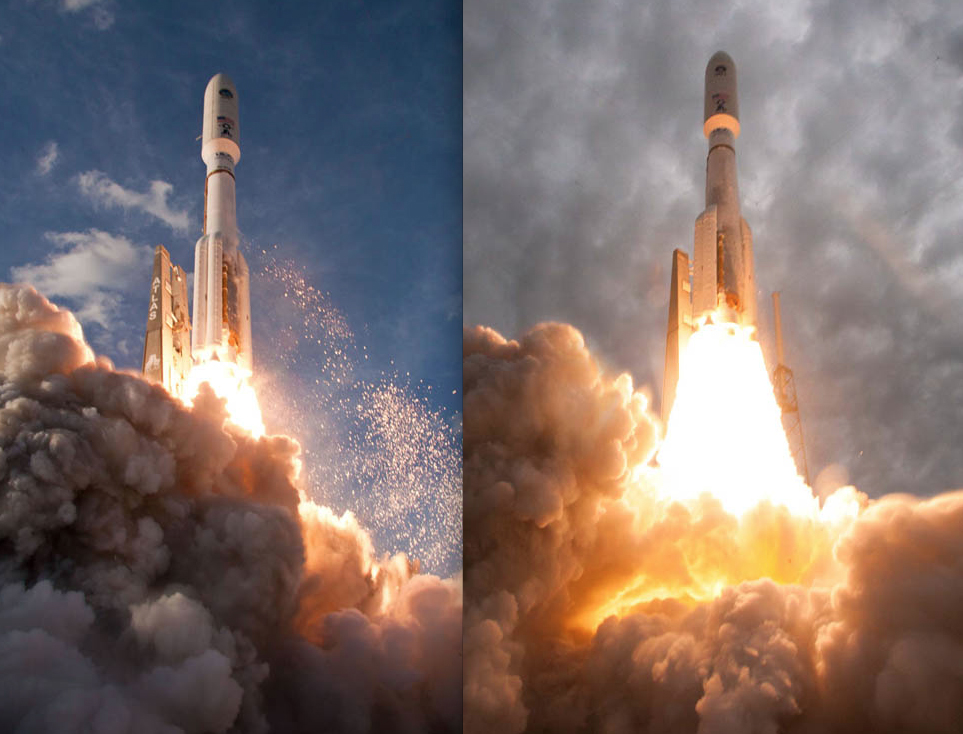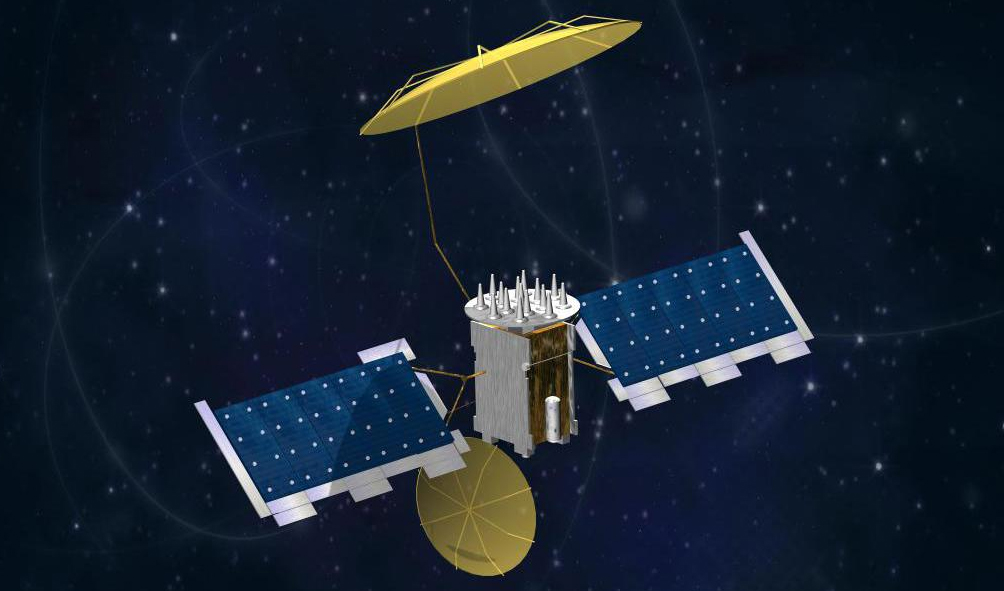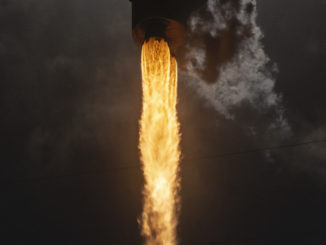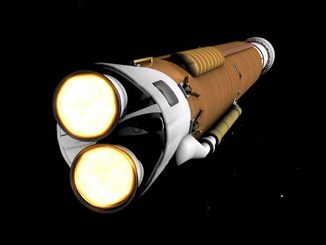
CAPE CANAVERAL — Launching for the 200th time and loaded with one of its heaviest cargoes ever, the Atlas-Centaur rocket flexed its muscle and sped away from Cape Canaveral on Tuesday night with a U.S. Navy satellite for mobile communications to the military and White House.
Igniting at 8:04 p.m. EST (0104 GMT) at Complex 41, the 20-story rocket blasted off and quickly executed its dramatic pitch, yaw and roll manevers to obtain the proper eastward heading, arcing over the Atlantic as it flew downrange.
It was a complex ascent, featuring three separate firings by the Centaur upper stage to systematically raise the orbital altitude to deploy the third MUOS satellite into a high-perigee geosynchronous transfer orbit, tilted 19 degrees to the equator.
“The MUOS 3 spacecraft is the heaviest payload to launch atop an Atlas 5 launch vehicle. The Atlas 5 generated more than two and half million pounds of thrust at liftoff to meet the demands of lifting this nearly 7.5-ton satellite,” said Jim Sponnick, ULA vice president, Atlas and Delta Programs.
“Today’s launch was the 200th Atlas-Centaur launch – a very sincere congratulations to the many women and men responsible for the incredible success of the Centaur upper stage over the last 5 decades!”
The U.S. Navy’s Mobile User Objective System communications network remains under construction, with one more primary satellite set to launch this August and an on-orbit spare next summer.
MUOS 1 was launched Feb. 24, 2012 aboard an Atlas 5 and serves as the Pacific Ocean satellite. MUOS 2 launched July 19, 2013 aboard another Atlas 5 and serves as the continental U.S. satellite.

The MUOS satellite No. 3, set to become the Atlantic Ocean regional satellite, takes the next step to assemble a worldwide communications system using 3G-cellular technology for ships, submarines, aircraft, land vehicles and terminals in the hands of troops.
The new system offers more bandwidth on demand, better voice quality, simultaneous voice and data and better connectivity on the move in remote locations, under weather, in urban environments than ever before.
Users will include the four branches of military, government agencies, border patrol and the president.
MUOS 3 will complete post-launch orbit shaping in about 8 days, then deploy its solar arrays and umbrella-like antenna reflectors to achieve the “flight configuration” about 12 days after launch
Then begins several months of satellite system and payload testing before builder Lockheed Martin hands over the craft to the government for additional checks in advance of setting it operational.
“Thanks to the Atlas team for the safe delivery of MUOS 3 into our geosynchronous transfer orbit,” said Iris Bombelyn, vice president of Narrowband Communications at Lockheed Martin.
“We look forward to completing our on-orbit health checks and delivering this important asset to the U.S. Navy. The addition of this satellite will give the MUOS constellation coverage over more than three-quarters of the globe, further extending the reach of the advanced communications capabilities MUOS will provide our mobile warfighters.”
From its eventual spot in geosynchronous orbit, a parking spot 22,300 miles up, the expansive footprint of MUOS 3 will cover nearly a third of the planet.
MUOS serves a dual-provider of both voice traffic currently routed by the Navy’s existing generation, albeit aging, Ultra High Frequency Follow-On spacecraft, but it also creates a new era of mobile communications built around 3G cellular technology to relay narrowband tactical information such as calls, data messaging, file transfers and email on rates of up to 384 Kilobits per second.
This was the 52nd Atlas 5 launch, the first of the year and the 92nd ULA mission. ULA plans 9 more Atlas flights in the next 12 months:
March 12 @ Cape Canaveral: An Atlas 5 rocket will boost four identical craft into Earth orbit to study magnetic field explosions in space. Together, the quartet is NASA’s Magnetospheric Multiscale mission, or MMS. The spacecraft will fly in a tetrahedron formation, coming within 6 miles of each other, while looping around Earth to image “magnetic reconnections” or explosions in the magnetic field.
May 6 @ Cape Canaveral: The next flight of the X-37B Orbital Test Vehicle is planned for the mini Air Force space shuttle, boosted by an Atlas 5 rocket. After three successful missions in orbit and pinpoint landings, the orbiter returns to space for another classified flight.
June 16 @ Cape Canaveral: The launchings of navigation replacement spacecraft now switches to the Atlas 5 rocket with the GPS 2F-10 satellite. The Block 2F series forms the backbone of the GPS constellation for the next 15 years.
Aug. 13 @ Cape Canaveral: The fourth of the four primary MUOS satellites will be launched for the U.S. Navy aboard an Atlas 5 rocket. The Mobile User Objective System is made up of sophisticated spacecraft that creates a mobile communications network that will span the globe.
Aug. 27 @ Vandenberg: The year’s second of two NRO launches will use an Atlas 5 rocket from the West Coast. The National Reconnaissance Office’s NROL-55 mission is another clandestine satellite deployment flight.
Sept. 16 @ Cape Canaveral: The penultimate craft in the Boeing-built Global Positioning System Block 2F navigation satellite series will ride another Atlas 5 into orbit and become the GPS 2F-11 bird. The new GPS satellite launches ensures the constellation remains healthy and robust.
Oct. 20 @ Cape Canaveral: The Morelos 3 communications satellite, owned by the Mexican Ministry of Communications and Transportation, will launch on an Atlas 5 rocket. The commercial mission will use the rocket’s 421 configuration, with a four-meter payload fairing, two solid rocket boosters, and a single RL10 engine on the Centaur stage. Also known as Mexsat 2, the craft will be positioned in geostationary orbit over the equator at 116.8 degrees west longitude for a 15-year service life.
Nov. 19 @ Cape Canaveral: As a gap filler for the grounded Orbital Sciences Antares rocket, the company has contracted with Atlas 5 to launch a Cygnus commercial resupply services mission to the International Space Station. The ship will carry food, spare parts and experiments to the orbital laboratory complex.
Jan. 26, 2016 @ Cape Canaveral: The final Block 2F Global Positioning System satellite is launched by an Atlas 5 rocket as the GPS 2F-12 navigation spacecraft.
See our earlier MUOS 3 coverage.
And see our Atlas archive for further information.




